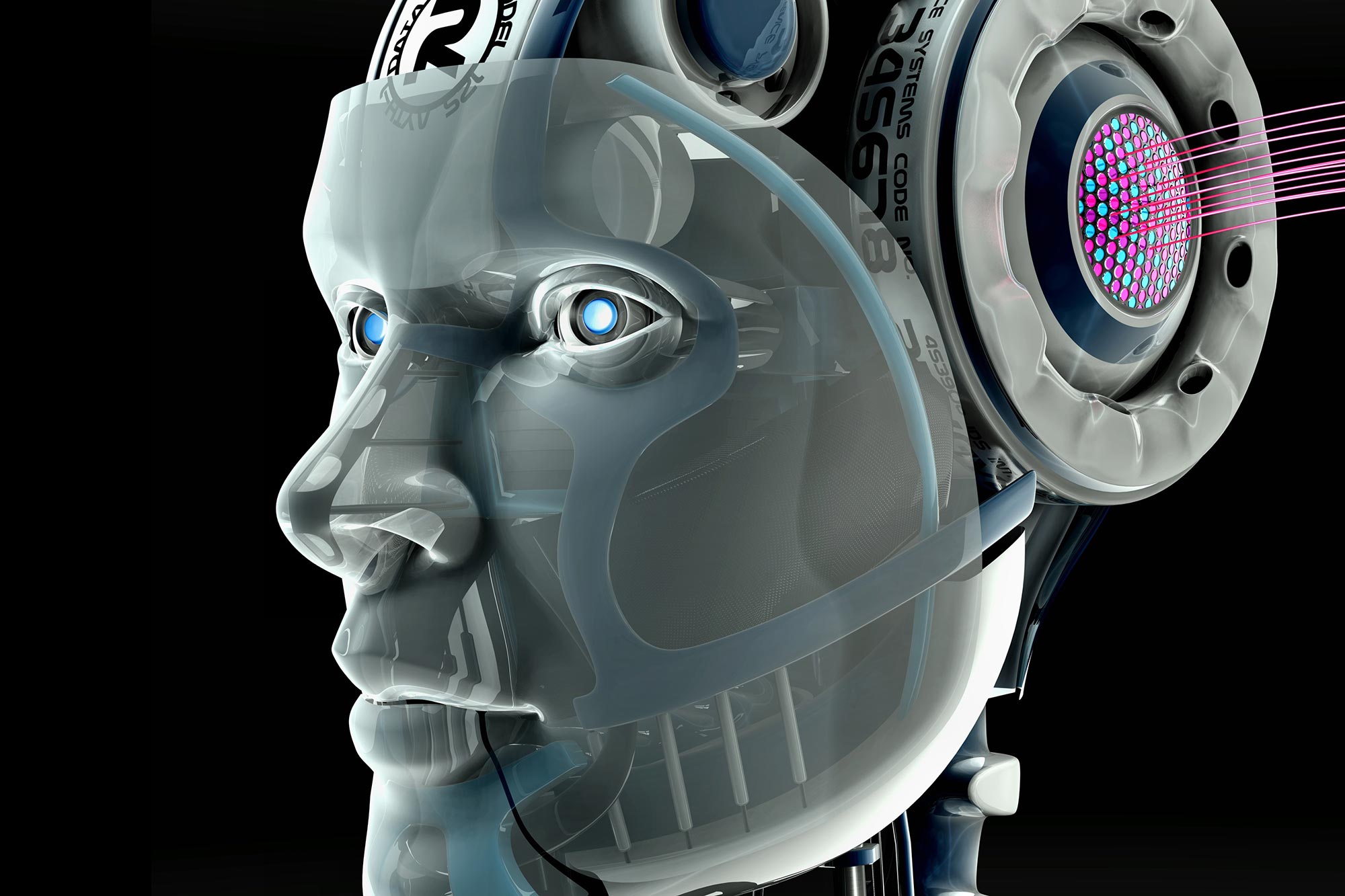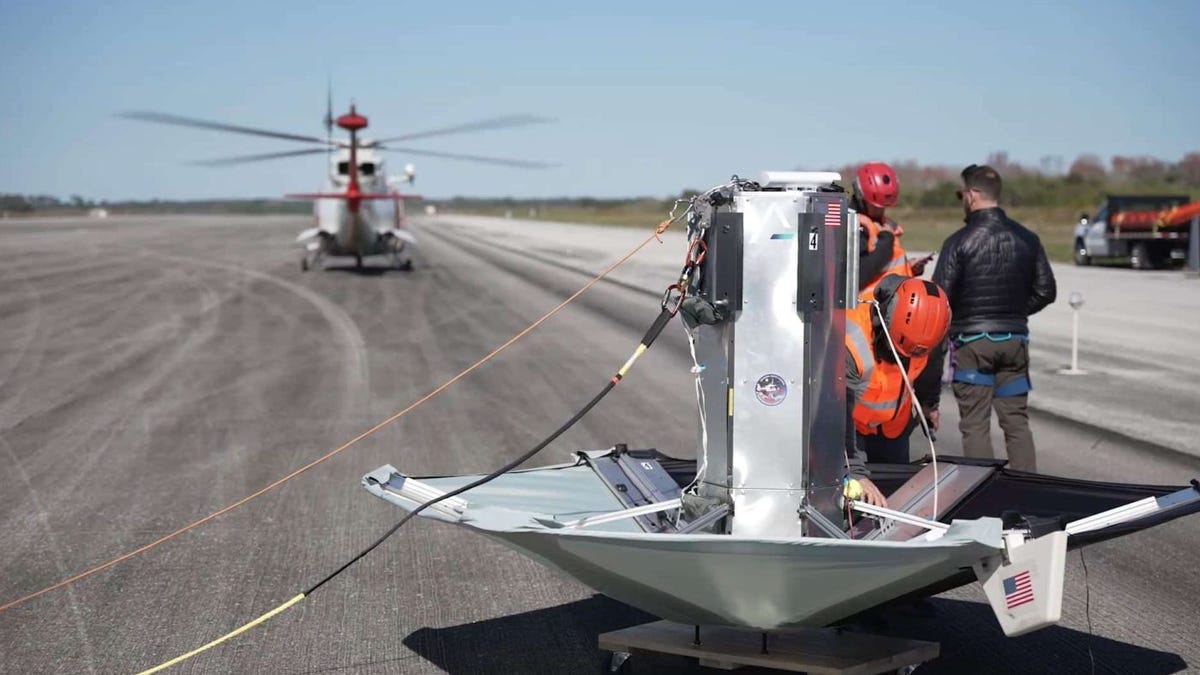science
Une renaissance scientifique dans le monde de l’intelligence artificielle

AI-Descartes, l’intelligence artificielle mondiale développée par des chercheurs d’IBM Research, de Samsung AI et de l’Université du Maryland, comté de Baltimore, a reproduit des éléments clés du travail lauréat du prix Nobel, notamment les équations de comportement des gaz de Langmuir et la troisième loi de Kepler mouvement. Soutenu par la Defense Advanced Research Projects Agency (DARPA), le système d’IA utilise la régression symbolique pour trouver des équations qui correspondent aux données, et se distingue surtout par sa capacité de raisonnement logique. Cela permet à AI-Descartes de déterminer quelles équations sont les plus appropriées à la théorie scientifique de base. Le système est particulièrement efficace avec des données réelles bruitées et de petits ensembles de données. L’équipe crée de nouveaux ensembles de données, forme des ordinateurs à lire des articles scientifiques et élabore des théories de base pour améliorer et étendre les capacités du système.
Le système a démontré sa coupure sur la troisième loi de Kepler sur le mouvement planétaire, la loi d’Einstein sur la dilatation relativiste du temps et l’équation d’absorption de gaz de Langmuir.
AI-Descartes, le nouveau scientifique de l’IA, a reproduit avec succès le travail lauréat du prix Nobel en utilisant le raisonnement logique et la régression symbolique pour trouver des équations exactes. Le système est efficace avec des données du monde réel et de petits ensembles de données, avec des objectifs futurs, notamment l’automatisation de la construction de théories de fond.
En 1918, le chimiste américain Irving Langmuir a publié un article qui étudiait le comportement des molécules de gaz adhérant à une surface solide. Guidé par les résultats d’expériences minutieuses, ainsi que par sa théorie selon laquelle les solides fournissent des sites d’emballage séparés pour les molécules de gaz, il a proposé une série d’équations décrivant la quantité de gaz qui collerait, compte tenu de la pression.
Aujourd’hui, près de cent ans plus tard, le « monde de l’intelligence artificielle » développé par des chercheurs d’IBM Research, de Samsung AI et de l’Université du Maryland, comté de Baltimore (UMBC) a reproduit une partie essentielle des travaux de Langmuir, lauréat du prix Nobel. Le système – une intelligence artificielle (IA) agissant comme un scientifique – a redécouvert la troisième loi du mouvement planétaire de Kepler, qui peut calculer le temps qu’il faut à un objet spatial pour orbiter autour d’un autre compte tenu de la distance qui les sépare, et a produit une bonne approximation du temps relatif d’Einstein – la loi d’échelle, qui montre que le temps Il ralentit pour les objets en mouvement rapide.
La recherche a été soutenue par la Defense Advanced Research Projects Agency (DARPA).[{ » attribute= » »>DARPA). A paper describing the results will be published today (April 12) in the journal Nature Communications.
A machine-learning tool that reasons
The new AI scientist—dubbed “AI-Descartes” by the researchers—joins the likes of AI Feynman and other recently developed computing tools that aim to speed up scientific discovery. At the core of these systems is a concept called symbolic regression, which finds equations to fit data. Given basic operators, such as addition, multiplication, and division, the systems can generate hundreds to millions of candidate equations, searching for the ones that most accurately describe the relationships in the data.
AI-Descartes offers a few advantages over other systems, but its most distinctive feature is its ability to logically reason, says Cristina Cornelio, a research scientist at Samsung AI in Cambridge, England who is first author on the paper. If there are multiple candidate equations that fit the data well, the system identifies which equations fit best with background scientific theory. The ability to reason also distinguishes the system from “generative AI” programs such as ChatGPT, whose large language model has limited logical skills and sometimes messes up basic math.
“In our work, we are merging a first-principles approach, which has been used by scientists for centuries to derive new formulas from existing background theories, with a data-driven approach that is more common in the machine learning era,” Cornelio says. “This combination allows us to take advantage of both approaches and create more accurate and meaningful models for a wide range of applications.”
The name AI-Descartes is a nod to 17th-century mathematician and philosopher René Descartes, who argued that the natural world could be described by a few fundamental physical laws and that logical deduction played a key role in scientific discovery.
Suited for real-world data
The system works particularly well on noisy, real-world data, which can trip up traditional symbolic regression programs that might overlook the real signal in an effort to find formulas that capture every errant zig and zag of the data. It also handles small data sets well, even finding reliable equations when fed as few as ten data points.
One factor that might slow down the adoption of a tool like AI-Descartes for frontier science is the need to identify and code associated background theory for open scientific questions. The team is working to create new datasets that contain both real measurement data and an associated background theory to refine their system and test it on new terrain.
They would also like to eventually train computers to read scientific papers and construct the background theory themselves.
“In this work, we needed human experts to write down, in formal, computer-readable terms, what the axioms of the background theory are, and if the human missed any or got any of those wrong, the system won’t work,” says co-author Tyler Josephson, assistant professor of Chemical, Biochemical and Environmental Engineering at UMBC. “In the future,” he says, “we’d like to automate this part of the work as well, so we can explore many more areas of science and engineering.”
This goal motivates Josephson’s research on AI tools to advance chemical engineering.
Ultimately, the team hopes their AI-Descartes, like the real person, may inspire a productive new approach to science. “One of the most exciting aspects of our work is the potential to make significant advances in scientific research,” Cornelio says.
Reference: “Combining Data and Theory for Derivable Scientific Discovery with AI-Descartes” 12 April 2023, Nature Communications.
DOI: 10.1038/s41467-023-37236-y
Funding: Defense Advanced Research Projects Agency

« Spécialiste de la télévision sans vergogne. Pionnier des zombies inconditionnels. Résolveur de problèmes d’une humilité exaspérante. »
science
L'Université Tsinghua développe des techniques de construction d'habitats lunaires

L'Université Tsinghua développe des techniques de construction d'habitats lunaires
Par Simon Mansfield
Sydney, Australie (SPX), 19 avril 2024
L'exploration de la construction d'habitats lunaires par l'Université Tsinghua met en évidence la transition de la simple exploration à la construction et à l'utilisation réelles sur la Lune, en mettant l'accent sur le durcissement du régolithe in situ. Avec près de 20 technologies différentes évaluées pour créer des matériaux à base de régolithe, l'examen du professeur Feng fournit une classification et une évaluation systématiques, identifiant les défis importants et les orientations pour les progrès futurs.
La recherche classe les techniques de durcissement des régolithes en quatre groupes en fonction de leurs mécanismes de liaison et de consolidation : durcissement par réaction (RS), frittage/fusion (SM), durcissement par liaison (BS) et formation de confinement (CF). Chaque gamme et technologie spécifique est soigneusement mesurée en termes de paramètres de processus et de performances, mettant en valeur ses diverses exigences et capacités.
La solidification réactive implique la liaison des particules de régolithe avec des composés réactifs et repose en grande partie sur des matériaux transportés par fusée, le régolithe représentant 60 à 95 % du mélange. Processus de frittage/fusion du régolithe à des températures élevées, dépassant souvent 1 000 °C, ce qui pose d’importants défis énergétiques et opérationnels. Le durcissement par liaison utilise des liants pour le collage, nécessitant moins de temps et des températures plus basses, tandis que la formation par confinement utilise un tissu pour créer des composants de sac régolithe à haute résistance, bien qu'ils puissent manquer de résistance à la compression.
L'étude présente la méthode 8IMEM pour évaluer ces technologies, en utilisant huit indicateurs pour mesurer leur efficacité et leur adéquation à la construction de la Lune. Le remplissage Regolith occupe la première place, réduisant la consommation de ressources et d'énergie tout en permettant une configuration rapide des composants. Les technologies solaires de frittage/fusion et de fusion fonctionnent également bien, ces dernières utilisant l’énergie solaire directement dans une construction rentable.
La recherche est conforme aux objectifs progressifs des Stations internationales de recherche lunaire, établissant un plan de développement en quatre phases : laboratoire, station de recherche, hébergement et habitat, chacune étant spécifiquement conçue pour répondre à des besoins de construction et fonctionnels spécifiques. Les données quantitatives soutiennent l'utilisation de la technologie régolithe pour construire des bases lunaires, fournissant ainsi un modèle fonctionnel pour les futurs habitats lunaires.
Rapport de recherche:Construction lunaire in situ à grande échelle : évaluation quantitative des techniques de durcissement des régolithes
Liens connexes
Université de Tsinghua
Actualités et informations sur Mars sur MarsDaily.com
Rêves de lune et plus

« Spécialiste de la télévision sans vergogne. Pionnier des zombies inconditionnels. Résolveur de problèmes d’une humilité exaspérante. »
science
La société spatiale vise à livrer des fournitures vitales n'importe où en 90 minutes

Dans les années 1980, FedEx avait un formidable slogan : «Quand c'est définitivement, positivement, il doit y avoir du jour au lendemainEh bien, dans des situations telles que des conflits au sol et des scénarios de catastrophe, cela ne suffit pas. Consciente de la nécessité d'un service de livraison ultra-rapide, Sierra Space, basée au Colorado, développe actuellement un système permettant de livrer des fournitures presque partout sur Terre en seulement 90 minutes.
Sierra Space a actuellement de nombreux projets intéressants en cours, notamment Rêve d'un avion spatial Et un Station spatiale commerciale prévue. La semaine dernière, l'entreprise a surpris l'industrie en annonçant un autre projet ambitieux, une nouvelle plateforme appelée Ghost. La société affirme que « le nouveau vaisseau spatial logistique révolutionnaire sera doté d’un système de protection thermique avancé conçu pour le retour en toute sécurité de petites charges utiles depuis l’espace ». Le projet de logistique spatiale est conçu pour fournir des services de messagerie à la demande à une variété de clients, y compris des opérations de sécurité nationale et une assistance en cas de catastrophes naturelles.
« Nous envisageons un inventaire de véhicules Sierra Space Ghost stratégiquement situés, facilement accessibles et déployables en 90 minutes vers des emplacements critiques n'importe où sur Terre », a déclaré Tom Weiss, PDG de Sierra Space, dans un communiqué. déclaration. Le système devrait être capable de livrer des fournitures au « personnel de première ligne » dans un rayon de 100 mètres d’une zone cible désignée, selon l’entreprise.
Cette annonce fait suite à la création récente par Sierra Space de son organisation de missions et de services orbitaux, axée sur des solutions innovantes pour la sécurité nationale. La société affirme avoir déjà obtenu des contrats majeurs d'une valeur de 1,3 milliard de dollars pour des constellations de satellites dans le cadre de cette initiative.
Ghost a subi une série de trois tests de chute le 1er février au centre de lancement et d'atterrissage de Space Florida. Ces tests comprenaient une descente finale de 2 000 pieds (610 mètres) pour évaluer la dynamique d'impact, une descente contrôlée en parachute de 4 000 pieds (1 219 mètres) et la séparation des composants du blindage et de la charge utile, démontrant la capacité du véhicule à renvoyer les charges utiles en toute sécurité.
Une fois ce programme lancé, le vaisseau spatial préchargé attendra en orbite jusqu'à ce qu'il soit invité à rentrer. L'envoi peut comprendre un kit de survie, un bateau pneumatique, des rations, des armes et d'autres articles. Lors de l'activation, le vaisseau spatial se réorientera, initiera la rentrée et utilisera un bouclier de protection thermique pour résister à des températures allant jusqu'à 2 000 degrés Fahrenheit. Après la rentrée, le parafoil dirige la charge utile vers la zone d'atterrissage désignée. Chaque satellite devrait avoir une durée de vie de cinq ans, après quoi il sera retiré et désorbité.
Articles Liés: Firefly Aerospace établit un nouveau record de vitesse de lancement pour une mission de l'US Space Force
C’est une idée géniale et utile, et logique étant donné notre capacité croissante à accéder à l’espace et à y travailler. Combiné avec une technologie de réponse rapide, qui Les missiles peuvent être lancés dans les 24 heuresCela pourrait véritablement révolutionner notre capacité à apporter les choses aux personnes qui en ont le plus besoin, tout en devant être là de manière positive à un moment critique.
Pour plus de voyages spatiaux dans votre vie, suivez-nous X Un marque-page personnalisé pour Gizmodo Page sur les vols spatiaux.

« Spécialiste de la télévision sans vergogne. Pionnier des zombies inconditionnels. Résolveur de problèmes d’une humilité exaspérante. »
science
La communauté du rugby se mobilise pour le talentueux joueur après un diagnostic « dévastateur ».

La communauté du rugby s'est mobilisée pour aider un ancien joueur de Limerick City, après qu'il ait reçu un diagnostic « dévastateur ».
L'ancien joueur du Young Munster RFC, Sean Rigney, avait récemment « fait sa marque » sur la scène du rugby de Sydney, avant que son parcours ne prenne une tournure dévastatrice.
Originaire de Ballinagar dans le Co Offaly, le jeune homme est récemment tombé malade et a été transporté à l'hôpital. Son état s'est rapidement détérioré lorsqu'on lui a diagnostiqué un SARM, un type de bactérie résistante aux antibiotiques. Ce qui a conduit à la nécessité d’une opération à cœur ouvert.
Pour aider Sean sur le chemin du rétablissement, une collecte de fonds a été organisée par ses amis et coéquipiers.
Lorsqu'il a appris la nouvelle, son ami et ancien coéquipier Connor Phillips a été choqué.
« J'ai été vraiment choqué hier quand j'ai découvert ce qui s'est passé. Je compatis vraiment pour lui, il est si loin de chez lui et vient de démarrer un nouveau projet. Tout le monde pense à lui et lui souhaite bonne chance et je n'ai aucun doute qu'il le fera. « Récupérez et retrouvez la forme et la santé et rejouez au rugby le plus tôt possible », a déclaré Connor. « Peut-être ».
Dès leur première rencontre, les deux joueurs ont cliqué. Peut-être parce que lorsque Sean entre dans une pièce, « tout le monde est attiré par lui ».
« La première chose à propos de Rigney et moi, c'est que nous sommes complètement opposés, mais la première fois que nous nous sommes rencontrés, nous nous sommes tout de suite entendus. Il a cette capacité, quand il entre dans une pièce, tout le monde gravite autour de lui. C'est juste un « Il a une grande personnalité, vraiment drôle et attentionné. C'est un géant », a déclaré Connor. « Un gars sympa et un travailleur incroyable sur le terrain également. »
« J'ai été ravi quand j'ai appris qu'il partait pour l'Australie parce qu'il est venu d'Offaly à Limerick et qu'il en a vraiment fait sa maison. Il s'est si bien intégré à la communauté et à l'endroit. »
La collecte de fonds, organisée par Alan Fitzgerald de la NSW Rugby League, visait à aider le jeune joueur à affronter un « chemin difficile vers la guérison ».
« Sean Rigney, un talentueux joueur de rugby irlandais, a récemment fait sa marque sur la scène du rugby à Sydney, en Australie, en rejoignant le Southern Counties Rugby Club dans la prestigieuse compétition Shut Shield Rugby. Alan Fitzgerald a déclaré : « Son impact sur l'équipe a été immédiat. , promettant une belle saison. « Bright arrive. »
« Sean fait face à un chemin difficile vers son rétablissement, loin de son domicile et de sa famille. Le stress financier dû aux frais médicaux, associé à l'incapacité de travailler pendant qu'il est malade et en convalescence, est navrant », a-t-il expliqué.
Désormais, les amis de Sean ont contacté la communauté du rugby et au-delà pour obtenir leur soutien.
Il a ajouté : « Vos dons apporteront une aide cruciale à Sean pendant cette période difficile, en l’aidant à couvrir les frais médicaux et les frais de subsistance pendant qu’il se concentre sur le rétablissement de sa santé. »
Vous pouvez faire un don à la collecte de fonds ici.
Publicité – Continuez la lecture ci-dessous
Publicité – Continuez la lecture ci-dessous
Publicité – Continuez la lecture ci-dessous
Publicité – Continuez la lecture ci-dessous
Publicité – Continuez la lecture ci-dessous
Publicité – Continuez la lecture ci-dessous
Publicité – Continuez la lecture ci-dessous
Publicité – Continuez la lecture ci-dessous
Publicité – Continuez la lecture ci-dessous

« Spécialiste de la télévision sans vergogne. Pionnier des zombies inconditionnels. Résolveur de problèmes d’une humilité exaspérante. »
-
entertainment2 ans ago
Découvrez les tendances homme de l’été 2022
-
Top News2 ans ago
Festival international du film de Melbourne 2022
-
Tech1 an ago
Voici comment Microsoft espère injecter ChatGPT dans toutes vos applications et bots via Azure • The Register
-
science2 ans ago
Les météorites qui composent la Terre se sont peut-être formées dans le système solaire externe
-
science3 ans ago
Écoutez le « son » d’un vaisseau spatial survolant Vénus
-
Tech2 ans ago
F-Zero X arrive sur Nintendo Switch Online avec le multijoueur en ligne • Eurogamer.net
-
entertainment1 an ago
Seven révèle son premier aperçu du 1% Club
-
entertainment1 an ago
Centenaire des 24 Heures – La musique live fournit une bande-son pour la course








